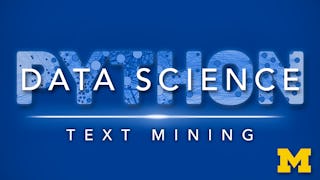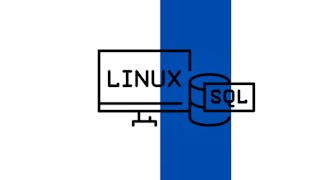Many fields, such as data science, bioinformatics, and Linux systems administration, require the manipulation of textual data. Tasks include extracting fields or records meeting certain conditions from structured data (e.g., comma-separated files), combining content from multiple files, applying systematic changes to all lines of a document, sorting or randomizing data, and splitting larger files into smaller files. While these operations could be done by hand, they tend to be time-consuming, tedious and, worst of all, error prone.



Empfohlene Erfahrung
Was Sie lernen werden
Use of basic and advanced tools for searching and manipulating text in a Linux environment
Regular expressions in the context of awk, sed and grep
Kompetenzen, die Sie erwerben
- Kategorie: Linux Commands
- Kategorie: Unix Commands
- Kategorie: Automation
- Kategorie: Data Manipulation
- Kategorie: File Management
- Kategorie: Unix
- Kategorie: Shell Script
- Kategorie: Scripting
- Kategorie: Linux Administration
- Kategorie: Data Processing
- Kategorie: Linux
- Kategorie: Command-Line Interface
- Kategorie: Text Mining
Wichtige Details

Zu Ihrem LinkedIn-Profil hinzufügen
Oktober 2025
12 Aufgaben
Erfahren Sie, wie Mitarbeiter führender Unternehmen gefragte Kompetenzen erwerben.

In diesem Kurs gibt es 7 Module
In this module, we start by providing some background on Linux tools, the prerequisites for the course, Linux flavors, the motivation for automating tedious and repetitive tasks, and accessing the GitHub repository. We also provide optional instructions for Mac users who wish to access the standard version of the tools that are distributed with Linux distros.
Das ist alles enthalten
2 Videos5 Lektüren
In this module, we dive in and cover the simpler tools in roughly their order of increasing complexity: head, tail, wc, expand, tac, paste, nl, tr, sort, shuf, uniq, split and cut. Along the way, we discuss the similarities and differences between the tools, potential pitfalls, limitations and linking tools together to create simple workflows.
Das ist alles enthalten
9 Videos1 Lektüre5 Aufgaben
This module explores three of the more powerful Linux text processing tools: grep, awk and sed. We start with using grep to find matches in a file. We then cover awk, which is actually a full programming language, but will limit our treatment to one-liners for extracting fields and records from a file. The module concludes with sed, a stream editor that can operate efficiently on arbitrarily large files.
Das ist alles enthalten
4 Videos3 Aufgaben
This module introduces regular expressions and the key features such as character classes, quantifiers, groups, anchors, alternation and word boundaries. These features are all covered in the context of grep, but we'll see later that they carry over to awk and sed.
Das ist alles enthalten
6 Videos1 Aufgabe
This module continues our discussion or regular expressions, going into some of the more advanced features that are only available in Perl compatible regular expressions, such as lazy matching, lookahead, lookbehind and backreferences. We also show how regexes can be used with awk and sed.
Das ist alles enthalten
6 Videos2 Lektüren2 Aufgaben
This is the last mandatory module of the course and includes the final exam and some closing remarks.
Das ist alles enthalten
1 Video1 Lektüre1 Aufgabe
This module contains the lecture notes used during the production of the videos. This is not required reading and is provided for those who wish to supplement the videos or who find that they learn better from written materials. Unlike the transcripts, these PDFs contain the commands that were executed during the videos. Note that while the videos generally follow the lecture notes, there will not be an exact correspondence between the videos and notes.
Das ist alles enthalten
25 Lektüren
Dozent

Mehr von Data Analysis entdecken
 Status: Kostenloser Testzeitraum
Status: Kostenloser TestzeitraumUniversity of Michigan
 Status: Kostenloser Testzeitraum
Status: Kostenloser TestzeitraumThe Linux Foundation
 Status: Kostenloser Testzeitraum
Status: Kostenloser Testzeitraum Status: Kostenloser Testzeitraum
Status: Kostenloser Testzeitraum
Warum entscheiden sich Menschen für Coursera für ihre Karriere?





Neue Karrieremöglichkeiten mit Coursera Plus
Unbegrenzter Zugang zu 10,000+ Weltklasse-Kursen, praktischen Projekten und berufsqualifizierenden Zertifikatsprogrammen - alles in Ihrem Abonnement enthalten
Bringen Sie Ihre Karriere mit einem Online-Abschluss voran.
Erwerben Sie einen Abschluss von erstklassigen Universitäten – 100 % online
Schließen Sie sich mehr als 3.400 Unternehmen in aller Welt an, die sich für Coursera for Business entschieden haben.
Schulen Sie Ihre Mitarbeiter*innen, um sich in der digitalen Wirtschaft zu behaupten.
Häufig gestellte Fragen
To access the course materials, assignments and to earn a Certificate, you will need to purchase the Certificate experience when you enroll in a course. You can try a Free Trial instead, or apply for Financial Aid. The course may offer 'Full Course, No Certificate' instead. This option lets you see all course materials, submit required assessments, and get a final grade. This also means that you will not be able to purchase a Certificate experience.
When you purchase a Certificate you get access to all course materials, including graded assignments. Upon completing the course, your electronic Certificate will be added to your Accomplishments page - from there, you can print your Certificate or add it to your LinkedIn profile.
Yes. In select learning programs, you can apply for financial aid or a scholarship if you can’t afford the enrollment fee. If fin aid or scholarship is available for your learning program selection, you’ll find a link to apply on the description page.
Weitere Fragen
Finanzielle Unterstützung verfügbar,
 enthalten
enthalten
